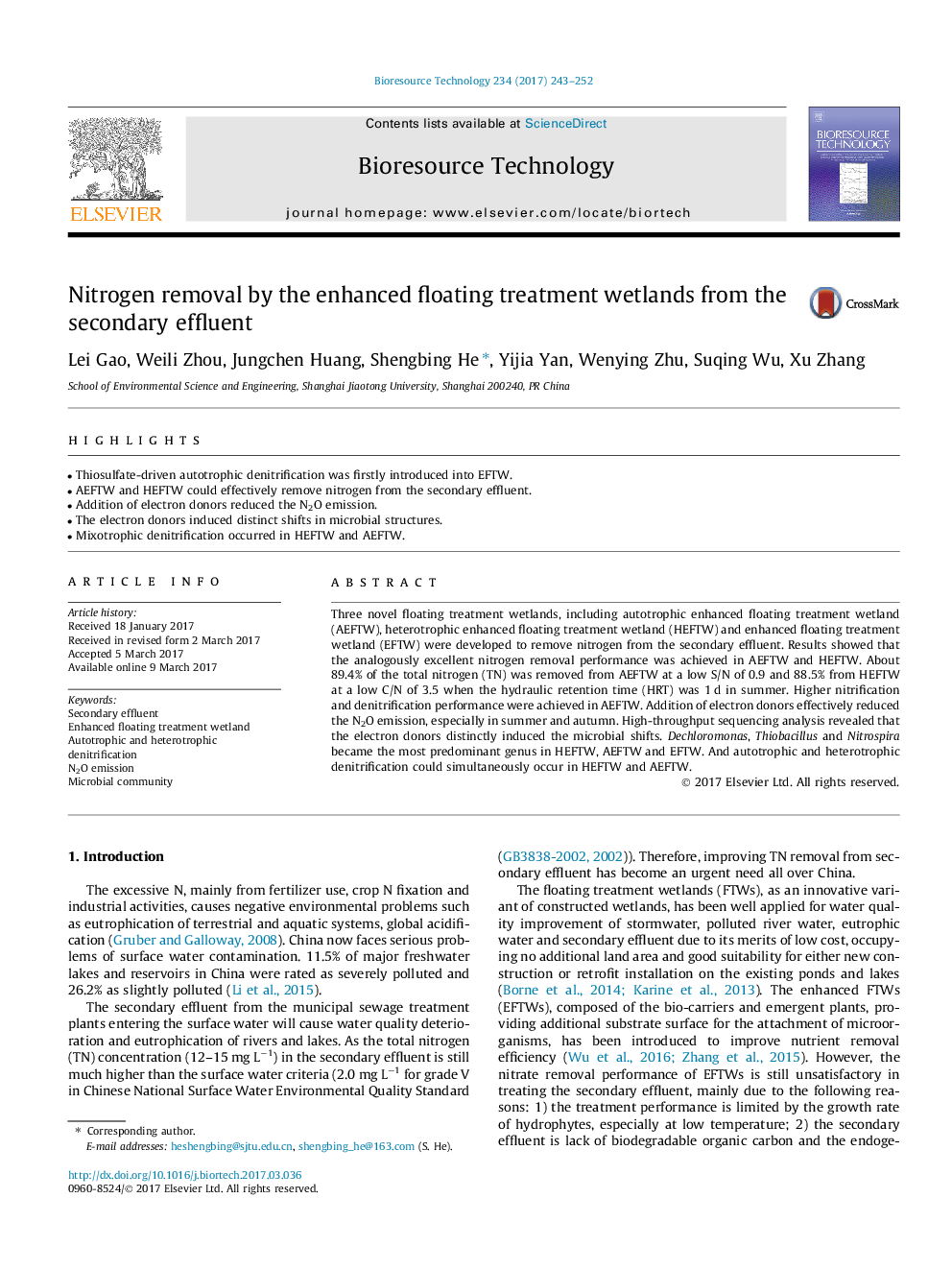| Article ID | Journal | Published Year | Pages | File Type |
|---|---|---|---|---|
| 4997302 | Bioresource Technology | 2017 | 10 Pages |
Abstract
Three novel floating treatment wetlands, including autotrophic enhanced floating treatment wetland (AEFTW), heterotrophic enhanced floating treatment wetland (HEFTW) and enhanced floating treatment wetland (EFTW) were developed to remove nitrogen from the secondary effluent. Results showed that the analogously excellent nitrogen removal performance was achieved in AEFTW and HEFTW. About 89.4% of the total nitrogen (TN) was removed from AEFTW at a low S/N of 0.9 and 88.5% from HEFTW at a low C/N of 3.5 when the hydraulic retention time (HRT) was 1Â d in summer. Higher nitrification and denitrification performance were achieved in AEFTW. Addition of electron donors effectively reduced the N2O emission, especially in summer and autumn. High-throughput sequencing analysis revealed that the electron donors distinctly induced the microbial shifts. Dechloromonas, Thiobacillus and Nitrospira became the most predominant genus in HEFTW, AEFTW and EFTW. And autotrophic and heterotrophic denitrification could simultaneously occur in HEFTW and AEFTW.
Related Topics
Physical Sciences and Engineering
Chemical Engineering
Process Chemistry and Technology
Authors
Lei Gao, Weili Zhou, Jungchen Huang, Shengbing He, Yijia Yan, Wenying Zhu, Suqing Wu, Xu Zhang,
